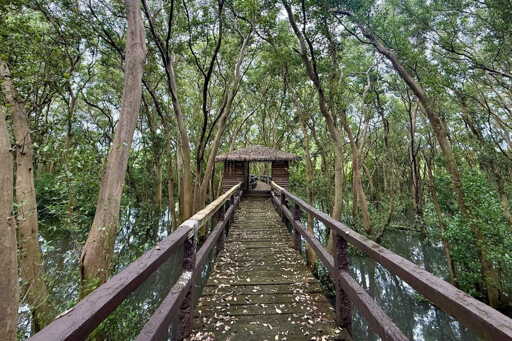MANILA — Spanning the coasts of two cities in Metro Manila, and referred to as the capital region’s “last coastal frontier,” Las Piñas-Parañaque Wetland Park (LPPWP) is a critical site of both ecological and economic importance. Primarily made up of two interconnected artificial islands, Freedom Island and Long Island, this thriving wetland ecosystem along Manila Bay started out as an unintentionally formed patch of land, the product of accumulated debris from a massive expressway construction project that was completed in 1985. Four decades later, the nearly 182-hectare (450-acre) habitat continues to be a sanctuary for more than 163 local and migratory bird species — including the endemic Philippine duck (Anas luzonica) and the Chinese egret (Egretta eulophotes), both listed as vulnerable on the IUCN Red List — as well as 23 mangrove species and numerous types of commercially viable fish and mollusks. Recognized as a Ramsar site for its global significance, the wetland provides food and serves as a stopover for an estimated 5,000 individual birds, particularly during the peak of the migration season from August to April. “LPPWP is called Metro Manila’s last coastal frontier because it really is the last remaining functional mangrove ecosystem,” says Kisha Muaña, a conservation biologist and policy and advocacy officer at Wetlands International Philippines, emphasizing that the robust forest serves as a haven for fish reproduction. A collared kingfisher (Todiramphus chloris) in Las Piñas-Parañaque Wetland Park. Image by Mark David De Guzman / One Pawikan Initiative. According to Muaña, thousands of fishers from…This article was originally published on Mongabay
From Conservation news via this RSS feed


